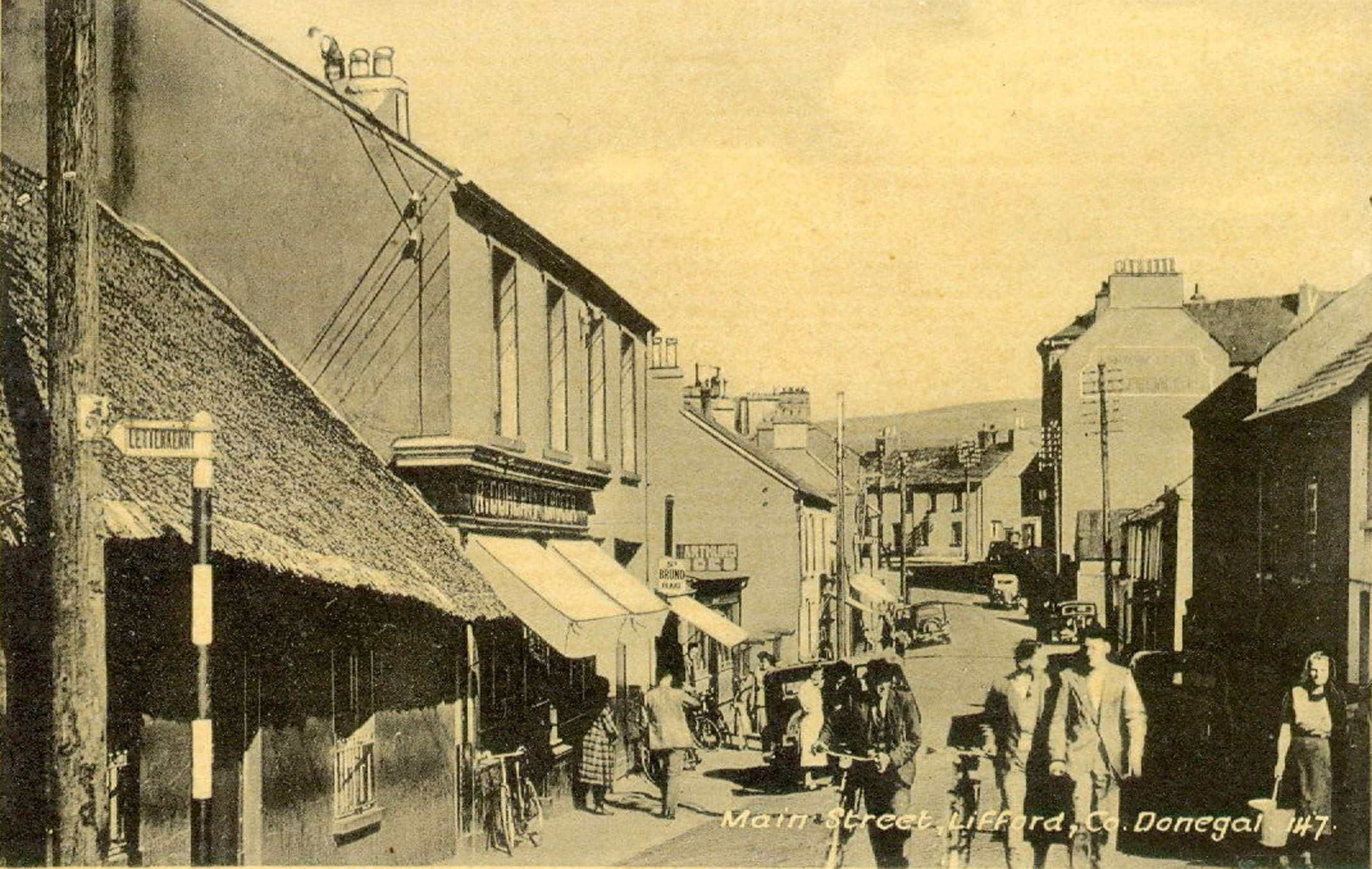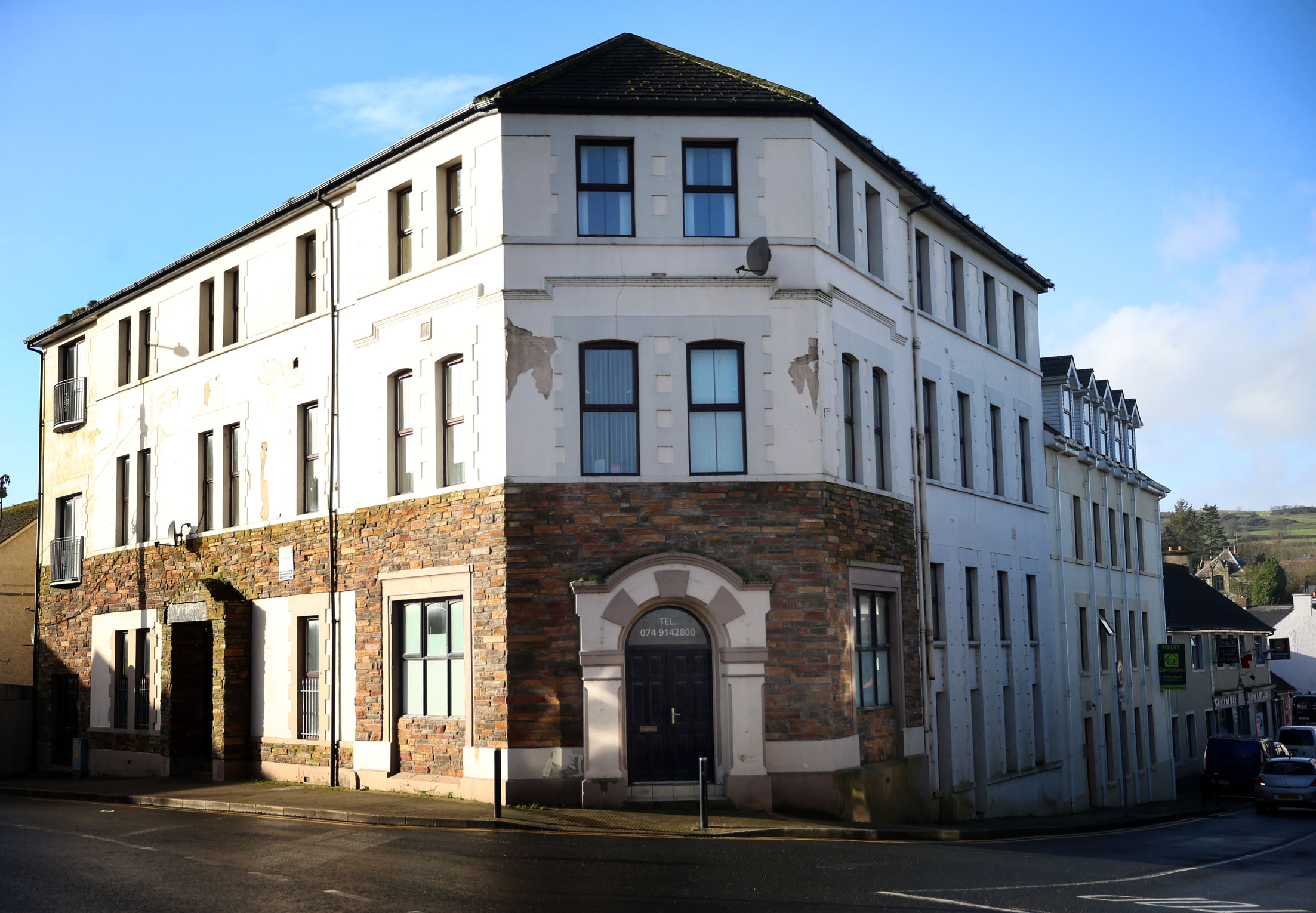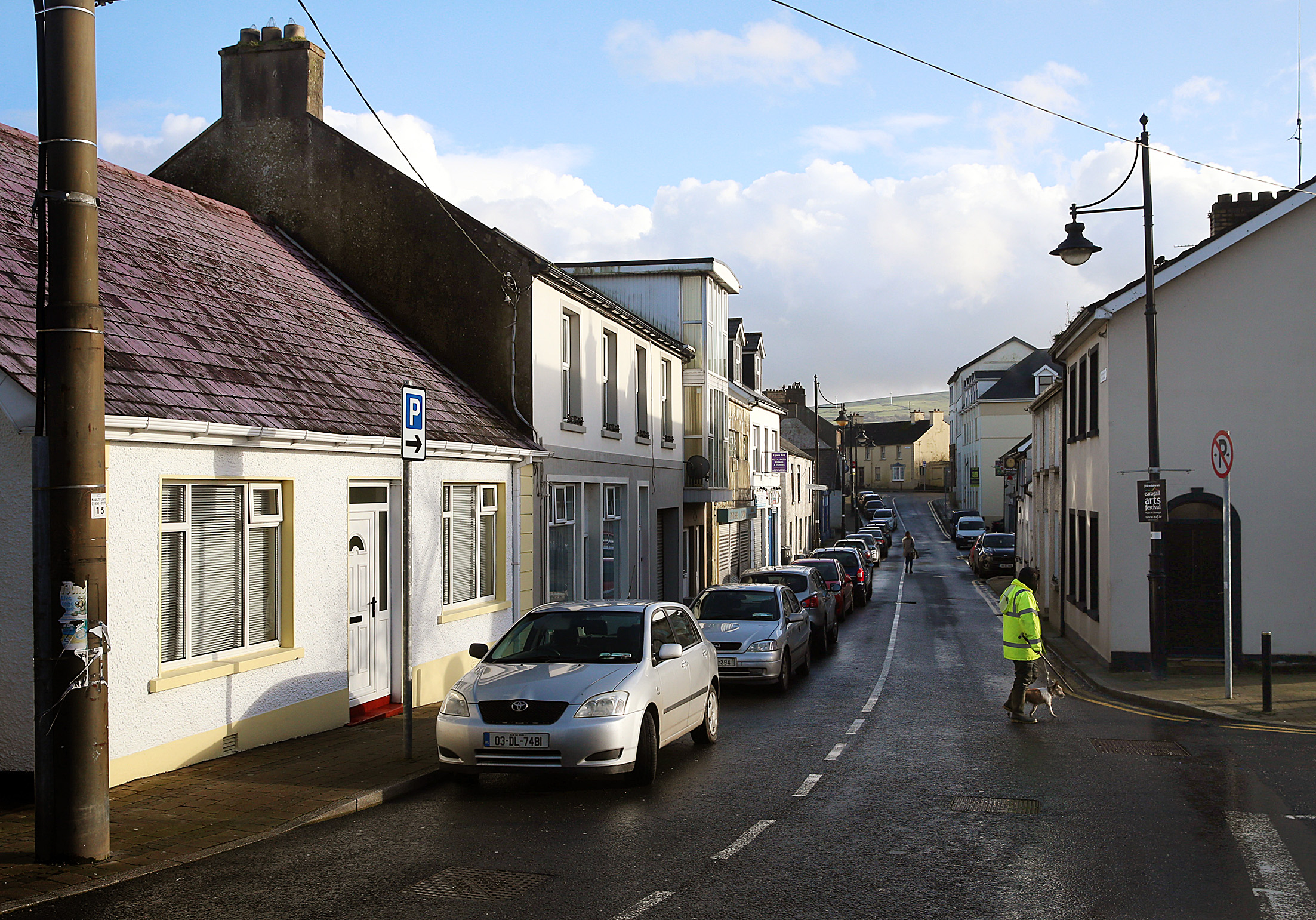
Main Street, Lifford in 1950. Do you remember it? Do recognise any of the people in the image? Photo courtesy of www.rareirishstuff.com.
A photograph of Lifford dating back almost 70 years has triggered fond memories of some of the border town’s long gone businesses.
The black and white image from 1950 recently surfaced on the website www.rareirishstuff.com, famed for its vintage collection of antiques, pub decor, posters and other curios.
It reveals a bustling Main Street with business including R Doherty’s Grocers, Arthur’s Ices and at the very far end, Devine’s Teas.
Several vehicles can also be seen, in a time when cars were still regarded as a luxury beyond the financial reach of most working class families.
Lifford woman and Donegal News columnist Collette Bonnar said the photo was a “poignant reminder of a bygone era”.
“This delightful old photograph of Lifford will surely take many people on a trip down memory lane,” said Collette.
“The solitary signpost marked ‘Letterkenny’ brings to mind that this was the only road out of Lifford to the Cathedral Town up until the 1960s.
“Nurse Coll, the midwife for the area lived in the thatched cottage on the left of the photograph. The midwife did her rounds on a bicycle and would have delivered many of the children in the community.
“Opposite the thatched cottage stood, and still stands, Harte’s Corner House. While it cannot be seen in the photograph, the Corner House once housed Harte’s Butcher shop. This shop was originally owned by Jim Harte, father of the recently-deceased and highly popular TD, Paddy Harte who served in Dáil Eireann for 36 years and was Minister of State for Post and Telegraphs in the mid-1980s. Paddy Harte’s first cousin, Billy Harte took over the butcher shop and ran it for over 50 years.
“Roddy Doherty’s shop, complete with awnings was next door to Nurse Coll’s house. I have fond memories as a child of going into Doherty’s shop with my siblings to shop for my mother. After we’d purchased the groceries, the kindly Roddy would open the wooden drawer under the counter where he’d kept a supply of sweets. Much to our delight he’d smile and say; ‘something to chew on the way home,’ as he’d hand us some Oatfield toffees. Next to Doherty’s shop was Arthur’s Café. The McNealy, Fields and Devine families lived in the houses opposite Roddy Doherty’s shop.
“The electric poles and wires evident in the photograph belie the fact that rural electrification didn’t come into force until 1956. When I researched this, I discovered that parts of Lifford were connected to the electricity in Sion Mills on the Tyrone side of the border. Other areas in the Lifford catchment area were connected to the national grid as far back as the 1930s ahead of the rural electrification scheme.
“Standing prominent in Lifford was Devine’s Shop – this can be clearly seen in this memorable shot of the town. This impressive building which was built in the early 1700s was originally a hotel and known as Lifford House. Visiting judges who came to preside at the courthouse would have stayed there. In the era when this photograph was taken the shop was a thriving business run by the Devine family from Strabane who were also tea merchants.

John Devine and Co, wholesale tea merchants, which was situated at the top of Lifford’s Main Street. Photo courtesy of Eleanor McGinty.
“The Devine brothers would have travelled to the tea auctions in Mincing Lane in London to purchase the chests of tea which would have been imported from India and Ceylon. After being shipped over to Ireland the tea would have been packed in the Lifford premises in red or yellow bags, depending on the grade. The very appropriate slogan on the bags of tea was; ‘Our Tea is Divine’.
“I remember visiting this shop with the high wooden counter and the circular interior. The genial shop assistants, Brendan Brolly, Jim McFadden, Charlie Clarke and John McGettigan always had a cheery greeting.
“One of the items that would have been on the shopping list was ‘frying ham’. This was gammon which would have been cut on the bacon slicer and resembled what we know today as gammon steaks. Old-fashioned scales with round brass weights stood pride of place on the counter, the weights would have ranged from ounces up to pounds. This was used to weigh anything from cheese to loose biscuits. The cheese would have been cut with a thin long wire and wrapped in grease-proof paper. Devine’s shop sadly closed in the late 1960s.

The former Devine tea merchants and Gateway Hotel building today.
Advertisement
“In the post-war years, Lifford was a prosperous town with many people coming across from Strabane to shop. In the photograph this is evidenced by the people and parked bicycles on the main street of Lifford. It’s intriguing to note the number of cars pictured when it is borne in mind very few families owned a car back then. In September of 1961 when Hurricane Debbie came in with full force, the slates from the houses on this main street fell like missiles but the town managed to survive without any serious damage or casualties.
“At the bottom of the street where the right turn passes Devine’s shop, the road to the left leads to the Diamond and Donegal County Council Offices which faces The Old Courthouse. On the corner opposite Devine’s shop is the Garda Barracks. This ancient stone structure is a protected building and built circa 1850.

And Lifford Main Street as it is today.
“As the recession of the 1950s swept over Ireland like a tidal wave, Lifford was badly affected. The flourishing town evidenced in this old photograph fell victim to the economic crisis and sadly many of the 40 plus shops were forced to close.
“For those of us who grew up in the county town of Lifford or the outskirts, this treasured snapshot is a poignant reminder of a bygone era.”
Posted: 7:00 pm February 6, 2018









